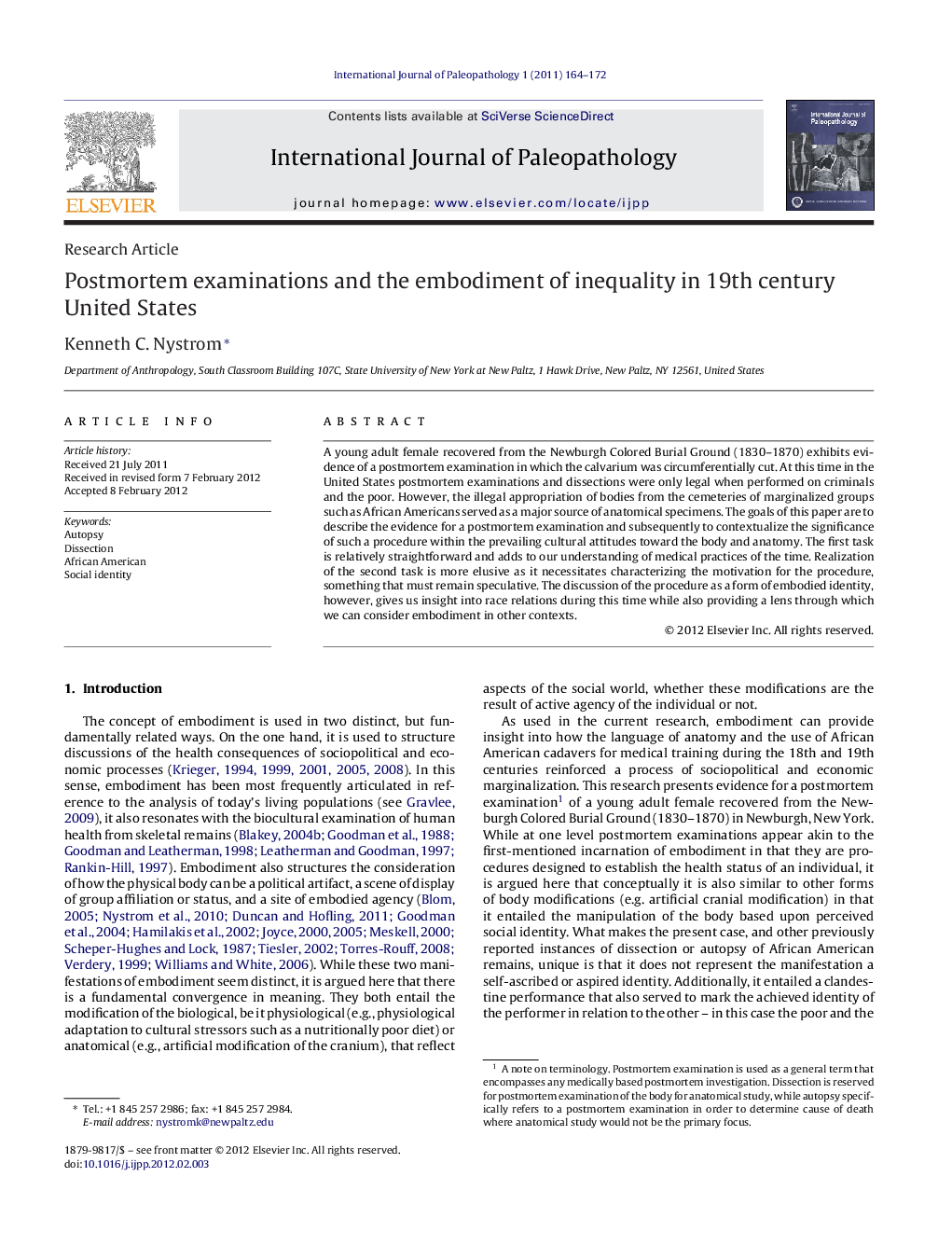| کد مقاله | کد نشریه | سال انتشار | مقاله انگلیسی | نسخه تمام متن |
|---|---|---|---|---|
| 101356 | 1422395 | 2011 | 9 صفحه PDF | دانلود رایگان |

A young adult female recovered from the Newburgh Colored Burial Ground (1830–1870) exhibits evidence of a postmortem examination in which the calvarium was circumferentially cut. At this time in the United States postmortem examinations and dissections were only legal when performed on criminals and the poor. However, the illegal appropriation of bodies from the cemeteries of marginalized groups such as African Americans served as a major source of anatomical specimens. The goals of this paper are to describe the evidence for a postmortem examination and subsequently to contextualize the significance of such a procedure within the prevailing cultural attitudes toward the body and anatomy. The first task is relatively straightforward and adds to our understanding of medical practices of the time. Realization of the second task is more elusive as it necessitates characterizing the motivation for the procedure, something that must remain speculative. The discussion of the procedure as a form of embodied identity, however, gives us insight into race relations during this time while also providing a lens through which we can consider embodiment in other contexts.
► A post-mortem examination is described from a 19th century African American cemetery.
► At this time, social identity was structured by a mind/body dichotomy.
► Postmortem examinations perpetuated a social identity assigned during life.
Journal: International Journal of Paleopathology - Volume 1, Issues 3–4, December 2011, Pages 164–172